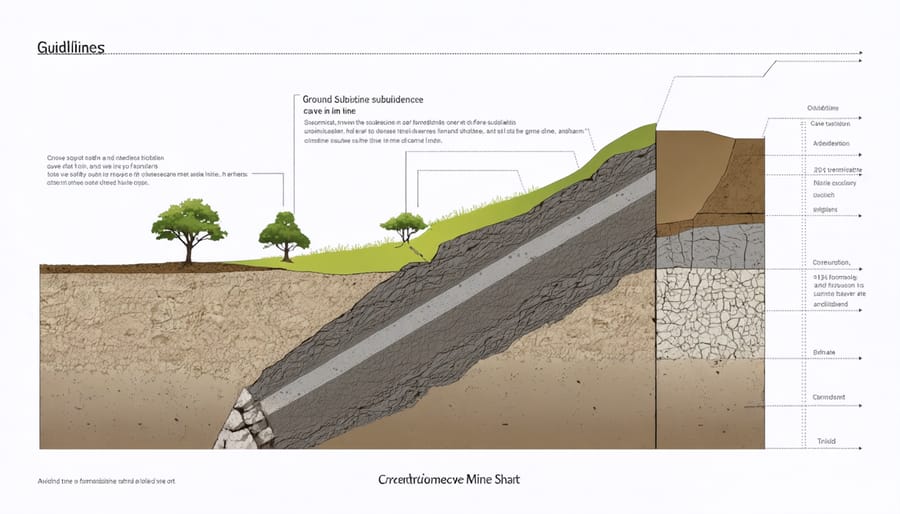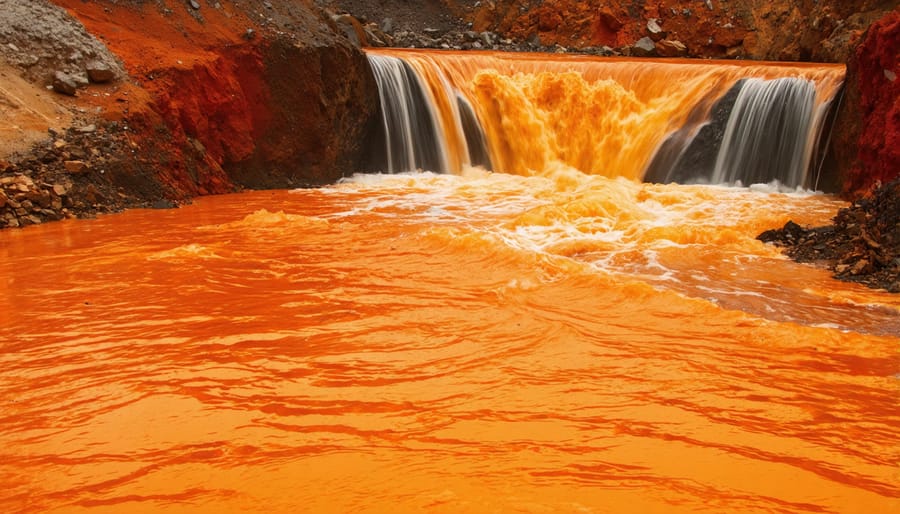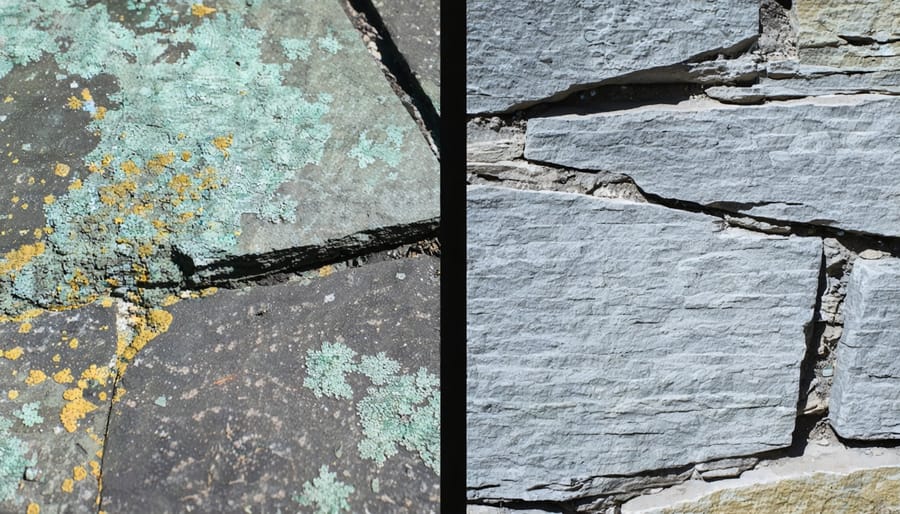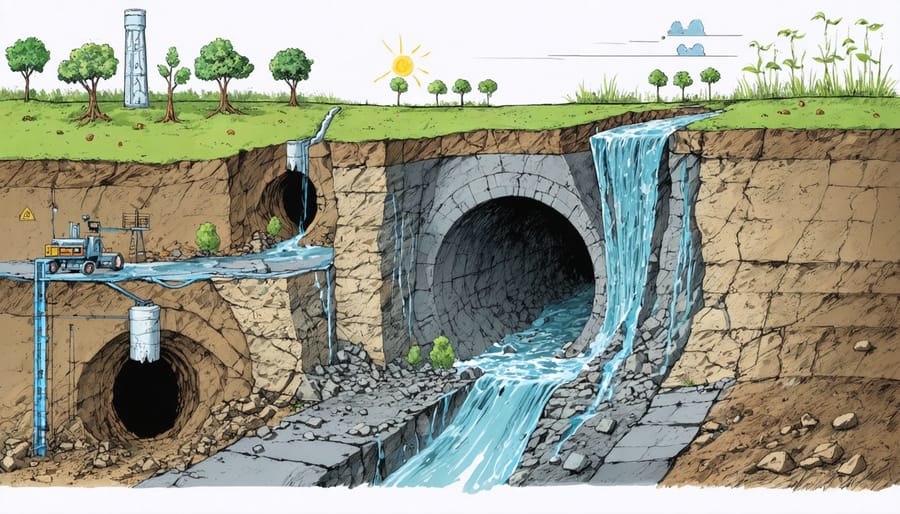Beneath the Earth’s surface lies a complex relationship between mining operations and environmental stability. Subsurface mining, while essential for accessing valuable mineral resources, creates lasting impacts that ripple through underground ecosystems and surface landscapes alike. From groundwater disruption and soil subsidence to the alteration of natural cave formations, these operations leave an indelible mark on our planet’s geological framework. Modern mining practices now grapple with the dual challenge of resource extraction and environmental preservation, as the industry seeks sustainable solutions to minimize ecological damage while meeting global mineral demands. Understanding these impacts is crucial for developing effective mitigation strategies and ensuring responsible resource management for future generations.
The far-reaching consequences of subsurface mining extend beyond the immediate extraction site, affecting water tables, soil composition, and underground biodiversity. This complex interplay of environmental factors requires careful consideration and innovative approaches to protect our natural resources while maintaining essential mining operations.
Direct Physical Impacts on Stone Structures

Ground Subsidence and Cave-ins
Underground mining operations can significantly alter the stability of the earth’s surface, leading to ground subsidence and cave-ins. As miners extract mineral deposits and create extensive tunnel networks, the removal of supporting rock structures can cause the overlying strata to shift, crack, and ultimately collapse.
These surface deformations often manifest as gradual sinking or sudden ground failures, creating hazardous conditions for both structures and inhabitants above. In urban areas, subsidence can damage building foundations, roads, and utility infrastructure, while in rural settings, it can alter natural drainage patterns and destroy agricultural land.
The severity of surface deformation depends on several factors, including mining depth, extraction methods, and local geology. For example, longwall mining typically causes immediate and predictable subsidence, while room-and-pillar methods may lead to delayed surface effects occurring years after mining cessation.
Modern mining operations employ various preventive measures, such as backfilling abandoned mines, leaving support pillars, and implementing careful extraction sequencing. However, historical mining sites continue to pose risks, with many communities worldwide dealing with the legacy of underground excavations through ongoing monitoring and remediation efforts.
Fracturing and Stress Patterns
Subsurface mining operations create complex networks of stress patterns in surrounding rock formations, leading to significant changes in the natural stone structure. When miners extract material from underground, the redistribution of weight and pressure causes fractures to develop in predictable patterns. These fractures typically form along existing geological weaknesses, such as bedding planes and natural joints.
The formation of cracks follows a hierarchical pattern, beginning with microscopic fissures that can develop into larger fractures over time. This process, known as progressive failure, can extend well beyond the immediate mining area. The stress distribution creates zones of tension and compression, with the most severe impacts occurring directly above the mined cavity.
Mining-induced fractures can facilitate groundwater movement, potentially leading to increased weathering and instability in the surrounding rock mass. The extent and severity of these fracture networks depend on factors including mining depth, extraction method, and the mechanical properties of the local stone formations. Understanding these patterns is crucial for both mining safety and environmental protection, as they influence surface subsidence and long-term geological stability.
Chemical Alterations and Weathering
Acid Mine Drainage Effects
Acid mine drainage (AMD) poses a significant threat to natural stone formations and surrounding ecosystems in mining areas. When sulfide minerals, particularly pyrite, are exposed to air and water during mining operations, they oxidize to form sulfuric acid. This acidic runoff can drastically alter the chemical composition of surrounding rock structures.
Limestone and marble formations are especially vulnerable to AMD effects due to their calcium carbonate composition. When acidic water contacts these stones, it triggers a chemical reaction that dissolves the calcium carbonate, leading to weakened structural integrity and surface deterioration. This process can create cavities, fissures, and unstable ground conditions in the affected areas.
The impact extends beyond immediate mining sites, as AMD can seep through rock layers and contaminate groundwater systems. This acidic water corrodes underground stone formations, creating new pathways for water flow and potentially destabilizing larger geological structures. The dissolution of minerals also releases heavy metals into the environment, further compromising stone integrity and ecosystem health.
Modern mining operations implement various preventive measures, including limestone barriers and neutralization systems, to minimize AMD’s destructive effects on natural stone formations. Regular monitoring of pH levels and stone composition helps identify early signs of acid-related deterioration.

Mineral Dissolution Patterns
Mining operations introduce various chemical byproducts that can significantly alter the natural weathering and erosion patterns of surrounding rock formations. When acidic mine drainage comes into contact with limestone and other carbonate-rich stones, it initiates a dissolution process that can compromise the structural integrity of underground cavities.
The most common dissolution occurs when sulfuric acid, formed from the oxidation of exposed sulfide minerals, reacts with calcium carbonate in the stone. This chemical reaction creates soluble calcium sulfate, effectively dissolving the stone matrix. The process accelerates in areas with high groundwater flow, creating channels and voids that can expand over time.
Additionally, mining operations often expose previously stable mineral deposits to oxygen and water, triggering new weathering reactions. The presence of iron-oxidizing bacteria can further catalyze these processes, leading to increased rates of mineral dissolution. This can result in the formation of solution cavities, structural instability, and potential surface subsidence.
The pattern and rate of dissolution vary depending on factors such as rock composition, groundwater chemistry, and local hydrological conditions. Understanding these patterns is crucial for implementing effective prevention and remediation strategies in mining operations.
Biological Community Changes
Microbial Population Shifts
Subsurface mining operations significantly alter the delicate balance of microbial communities that naturally exist in underground environments. These changes can have far-reaching effects on both the mining environment and surrounding ecosystems. Beneficial microorganisms that play crucial roles in nutrient cycling and mineral formation often decrease in population, while potentially harmful bacteria may flourish in disturbed conditions. This shift can accelerate the biological deterioration of stone and impact the structural integrity of remaining rock formations.
Studies have shown that mining activities can introduce new bacterial strains through equipment and human activity, while simultaneously creating conditions that favor acid-producing bacteria. These organisms can contribute to acid mine drainage and mineral dissolution. Conversely, certain native microorganisms that help maintain pH balance and contribute to natural stone preservation may be displaced or eliminated entirely.
Understanding these microbial population dynamics is crucial for developing effective environmental management strategies and minimizing long-term damage to underground ecosystems. Regular monitoring of microbial communities can serve as an early warning system for potential environmental issues.
Plant and Lichen Impact
Subsurface mining operations significantly impact the vegetation and lichen communities that naturally grow on stone surfaces. When mining activities alter the physical structure of rock formations, they disrupt these delicate ecosystems that have often taken decades or centuries to establish. Lichens, which typically act as pioneer species on rock surfaces, are particularly vulnerable to changes in moisture levels and air quality caused by mining operations.
The removal of rock layers can eliminate entire communities of specialized plants and lichens that have adapted to specific stone conditions. These organisms play crucial roles in stone weathering and soil formation processes, contributing to the natural evolution of landscapes. Their loss can accelerate erosion and disturb local ecological balance.
Mining-related dust deposits on surrounding rock surfaces can smother existing plant and lichen communities by blocking light and preventing gas exchange. Changes in groundwater levels and chemistry due to mining operations can also affect the survival of these organisms, as many species depend on specific moisture conditions and mineral compositions found in their native stone habitats.
Recovery of these plant and lichen communities after mining disturbance is typically slow, often requiring decades of undisturbed conditions to reestablish similar biodiversity levels.

Prevention and Mitigation Strategies
Modern mining operations employ various preventive measures and mitigation strategies to minimize environmental damage while maintaining productive extraction. Advanced stone conservation techniques play a crucial role in protecting valuable geological formations during mining activities.
Controlled blasting methods, including sequential detonation and precise explosive placement, help prevent unnecessary fracturing of surrounding rock structures. Engineers carefully map underground cavities and implement strategic support systems using reinforced pillars and roof bolts to prevent cave-ins and maintain structural integrity.
Water management systems are essential in preventing groundwater contamination and maintaining hydrogeological balance. These include installing drainage systems, water treatment facilities, and implementing regular monitoring protocols to detect any changes in water quality or flow patterns.
Buffer zones are established around sensitive geological features and ecological areas to protect them from mining activities. These protected areas help preserve natural formations while allowing controlled extraction in designated zones.
Modern monitoring technology, including seismic sensors and ground movement detection systems, provides real-time data about structural stability and potential risks. This allows mining operations to adjust their activities before significant damage occurs.
Post-mining restoration plans are developed before operations begin, ensuring proper cavity filling and ground stabilization. These plans often incorporate environmentally friendly materials and techniques to restore the natural balance of the area while preserving important geological features for future generations.
Regular environmental impact assessments and adjustments to mining practices help ensure continuous improvement in protection strategies while maintaining operational efficiency.
Subsurface mining’s environmental impacts are far-reaching and require careful consideration from all stakeholders in the natural stone industry. The physical alterations to landscapes, groundwater disruption, and ecosystem changes we’ve explored demonstrate the significant responsibility that comes with underground mining operations.
However, the industry has made substantial progress in developing sustainable practices and mitigation strategies. By implementing proper water management systems, utilizing advanced extraction techniques, and following strict environmental regulations, mining operations can significantly reduce their ecological footprint.
The future of responsible mining lies in balancing resource extraction with environmental preservation. This includes comprehensive pre-mining environmental assessments, ongoing monitoring of impacts, and implementing restoration plans that support ecosystem recovery. Industry professionals must continue to embrace innovative technologies and best practices that minimize environmental damage while meeting the growing demand for natural stone.
By prioritizing sustainable mining practices and environmental stewardship, we can ensure the continued availability of natural stone resources while protecting our planet’s valuable ecosystems for future generations. The key lies in maintaining this delicate balance through informed decision-making and responsible resource management.










